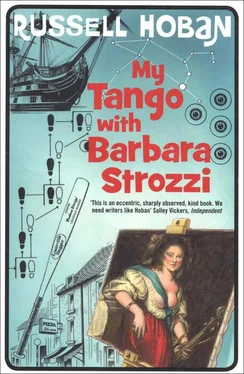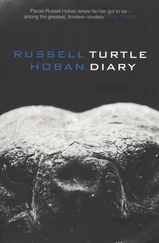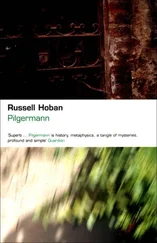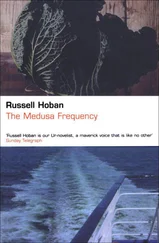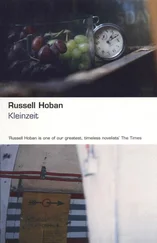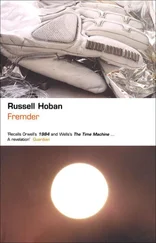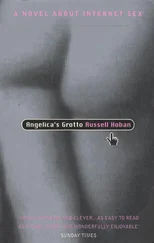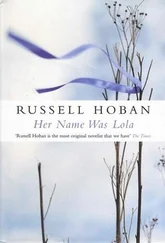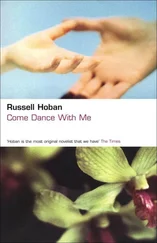Russell Hoban - My Tango With Barbara Strozzi
Здесь есть возможность читать онлайн «Russell Hoban - My Tango With Barbara Strozzi» весь текст электронной книги совершенно бесплатно (целиком полную версию без сокращений). В некоторых случаях можно слушать аудио, скачать через торрент в формате fb2 и присутствует краткое содержание. Год выпуска: 2007, Издательство: Bloomsbury UK, Жанр: Современная проза, на английском языке. Описание произведения, (предисловие) а так же отзывы посетителей доступны на портале библиотеки ЛибКат.
- Название:My Tango With Barbara Strozzi
- Автор:
- Издательство:Bloomsbury UK
- Жанр:
- Год:2007
- ISBN:нет данных
- Рейтинг книги:5 / 5. Голосов: 1
-
Избранное:Добавить в избранное
- Отзывы:
-
Ваша оценка:
- 100
- 1
- 2
- 3
- 4
- 5
My Tango With Barbara Strozzi: краткое содержание, описание и аннотация
Предлагаем к чтению аннотацию, описание, краткое содержание или предисловие (зависит от того, что написал сам автор книги «My Tango With Barbara Strozzi»). Если вы не нашли необходимую информацию о книге — напишите в комментариях, мы постараемся отыскать её.
My Tango With Barbara Strozzi — читать онлайн бесплатно полную книгу (весь текст) целиком
Ниже представлен текст книги, разбитый по страницам. Система сохранения места последней прочитанной страницы, позволяет с удобством читать онлайн бесплатно книгу «My Tango With Barbara Strozzi», без необходимости каждый раз заново искать на чём Вы остановились. Поставьте закладку, и сможете в любой момент перейти на страницу, на которой закончили чтение.
Интервал:
Закладка:
Russell Hoban
My Tango With Barbara Strozzi
To Dr Michael D. Feher
‘So there was the problem set for the sawyers — in a curved tree (butt or top it didn’t matter) to find that one aspect of it which was not curved — that one direction in which it could be sawn into two practically equal and similar halves from end to end.’
The Wheelwright’s Shop — George Sturt1 Phil Ockerman
When she told me that her name was Bertha Strunk I said, ‘Is Bertha’s trunk anything like Pandora’s box?’
‘That isn’t something you can find out in five minutes,’ she said. This was at the Saturday evening tango class for beginners in the crypt of St James’s Church, Clerkenwell.
Why the tango? Are you sitting comfortably? It began with Mimi, my ex-wife, coming round with some things that I’d left at the house. ‘Your latest effort got terrible reviews,’ she said by way of greeting.
‘The Irish Times and the Jewish Chronicle liked it,’ I countered.
‘I think you may be running out of ideas,’ she said.
I backed away from her and made a cross with my fingers. ‘Don’t say that!’
‘It happens,’ she continued. ‘ Hope of a Tree does not develop organically from its original impulse; it’s a put-together thing trying to pass itself off as a novel. I have to go now. See you.’
‘Please,’ I said, ‘be a stranger.’
When she left I had an awful dropped feeling in the pit of my stomach because I knew she was right. Altogether it was a delicate time for me; even before her visit I’d been uneasy about Pluto coming over my Sagittarian ascendant. ‘This a major mega astrological event,’ says Catriona, my astrologer. ‘Your quest for a new theme could take a long time, with retrogradation and the slow moving of the outer planet. Euphemisms such as transformations, deaths and resurrections of the spirit and cleansing with reference to depth psychology are often used in connection with this; also crisis, power struggles etc. Definitely a time for the shedding of habits, feelings, emotions or whatever which have lost their vitality or relevance.’ Thanks very much, Catriona. Most of my habits, feelings, emotions or whatever, probably all of them, have lost their vitality or relevance. ‘Your Pluto is in house (8th) area which is its own, death, loss of individual etc.,’ she goes on but I didn’t.
I couldn’t face the word machine and it was too early in the day to get drunk, so I went to the Royal Academy to look at the Face the Music exhibition: portraits of composers from all places and periods. Looking at various faces of those long dead I wondered how they’d feel about what’s happened to some of their music. Here’s Mozart, apparently without a care in the world. His Piano Concerto 21 was taken over by the film Elvira Madigan , the story of two doomed (by their own idiocy) young lovers, and will forever be associated with them by people ignorant even of the composer’s name. The slow movement must by now be his most widely recognised composition. I’d recently acquired the DVD of the film and I sat patiently through it. Unmoved. Films go out of date like bacon on the supermarket shelf. I doubt very much that Elvira Madigan would win prizes if released this year even though Pia Degermark has (as film critic Roger Ebert has noted) beautiful calves.
Tchaikovsky now, magisterially bearded but looking doubtful — whatever his sins he didn’t deserve what Ken Russell did to him with The Music Lovers . Did Russell hate the composer or what? Not that the film has much to do with Tchaikovsky, von Meck and the other famous names under which the actors perform as directed. The film is some kind of a lunatic thing with a life of its own that has little to do with any reality, not even Ken Russell’s, whatever that may be. Pyotr Ilyich has suffered other indignities as well: some years ago his Romeo and Juliet Overture was mawkished into ‘Our Love’ and ‘The Story of a Starry Night’ and sung by various and sundry.
Vivaldi! He looks frail but he very aggressively put me on hold and kept me there while I trudged through as much of Le Quatro Stagioni as I could remember. Vivaldi, at a switchboard near you for how many more seasons?
So many names, so many faces, so much music! But wait, who’s this? What does the card say? Barbara Strozzi, the seventeenth-century Venetian singer and composer who was known as La Virtuosissima Cantatrice . What a woman!
Not a beauty but she had a slightly sluttish look that was irresistible. Her eyes, so languorous, so not caring, so haunting after three centuries and more! She leans back in her chair, her blouse well off her shoulders, her bodice lowered to expose her breasts, her left hand grasping the neck of a viola da gamba. Barbara Strozzi! Dead for so many years but she reached out of the frame and clasped me to her opulent bosom and opened her mouth to my tongue. OK, it was all in my mind but so is everything else. Perhaps I fainted, I don’t know. I didn’t fall down but it was a Road-to-Damascus kind of thing. A girl of twelve or thirteen and her mother approached as I stood there. ‘That man has an erection,’ said the girl.
‘Nonsense,’ said the mother as they moved on. ‘It’s probably his iPod.’
I didn’t want to see any more pictures so I left. When I got home I dug around in my CD stacks until I found my Barbara Strozzi discs. The tracks were mostly lamentate , lamentations. I played some of them but they didn’t give me the Strozzi I’d seen in the portrait; they all had a downward spiral of sadness. OK, life is sad but the look in Barbara Strozzi’s eyes had a whole lot more than sadness in it. I wanted other music for her. What kind of music?
When I think of Venice I think of Francesco Guardi. There is a page of his macchiete in The Glory of Venice catalogue from the Royal Academy. These quick sketches done in brown ink, almost calligraphy, show gaggles of men and women like brown leaves hurried on by the winds of time. Guardi’s gondoliers, workmen and pedestrians in the oil paintings such as The Giudecca with the Zitelle are also full of movement, but of a stagey sort, as if they might be in an opera. It is particularly evident in pictures where chiaroscuro is exaggerated that Guardi is a precursor of Daumier: he paints gestures and peoples them, all of his figures moving through time. The buildings too, though solid and full of detail, are in motion through time. Sometimes this motion is slowed down, as in the wonderful Capriccio with an Arch in Ruin . Here Guardi’s imagination is measured and reflective: even the dogs pause for thought and the boatmen are in no hurry. Although Barbara Strozzi was painted by Bernardo Strozzi (whose illegitimate daughter she probably was) there was something of a Guardi capriccio in the look she turned upon me through the transparent centuries. There was music in that look — not her own lamentate but something more coarse and sexual and a rhythm of controlled passion. I don’t know the dances of Guardi’s time and Strozzi’s, but for me the music and the dance became tango.
I looked at her portrait in the catalogue again and words came to me, from where I couldn’t remember: ‘I faced up to life and … what?’ My hand went to the CD stacks and came up with Tita Merello, Arrabalera . The little brochure quoted her as saying, ‘I faced up to life and it left its mark on me.’ It sounds better in Spanish: ‘ Le di la cara a la vida y me la dejo marcada .’ I put the disc in the player and went to track 12, ‘El Choclo’. Her voice! It wound itself around me like the tanguera that she was, like her body touching mine and leaning away, her leg gripping my waist and releasing in the skirmishing of the dance. Barbara Merello, Tita Strozzi!
Читать дальшеИнтервал:
Закладка:
Похожие книги на «My Tango With Barbara Strozzi»
Представляем Вашему вниманию похожие книги на «My Tango With Barbara Strozzi» списком для выбора. Мы отобрали схожую по названию и смыслу литературу в надежде предоставить читателям больше вариантов отыскать новые, интересные, ещё непрочитанные произведения.
Обсуждение, отзывы о книге «My Tango With Barbara Strozzi» и просто собственные мнения читателей. Оставьте ваши комментарии, напишите, что Вы думаете о произведении, его смысле или главных героях. Укажите что конкретно понравилось, а что нет, и почему Вы так считаете.
